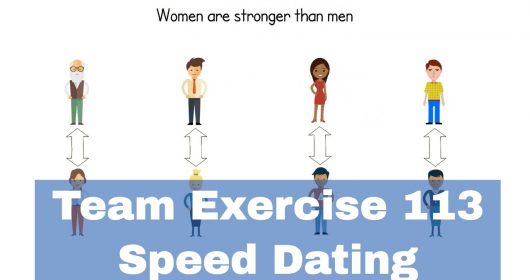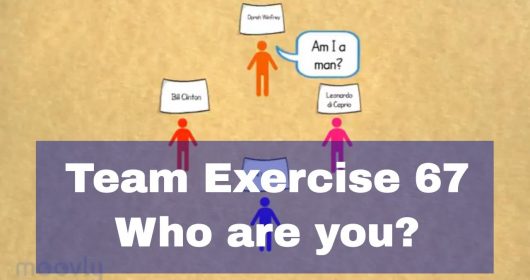Riddle games – What happened?

This is one of our riddle games in which the trainer comes up with a situation of which the participants may guess what happened by asking questions which can be answered with a simple yes or no.
This way the participants learn to ask questions as effectively as possible and learn to come to a solution together.
During the Riddle games exercise the trainer can applies various variations.
Variation 1:
Next to thrilling situation you can also come up with more light hearted situation.
For example when you do the exercise with children for whom it;s to exciting to play the thrilling situations.
Variation 2:
When you work with a big group you can divide the group into smaller groups and walk from one group to the other.
Each group asks you a yes/no question and you answer it.
When you walk to the next group the group that just asked a question can discuss the answer and thinks of a new question to ask. The group that guessed the the cause of the situation the fastest wins the game.
Variation 3:
When the team doesn’t have any inspiration to come up with a situation you can buy game:
https://www.amazon.co.uk/Moses-Verlag…
These are cards which contains a out of thrilling and exciting situation with on the back of course the answer.
You can can sort out the cards to the team.
This way any team member has a situation to tell and knows the answer so he can answer the yes/no questions from his fellow team members.
Do you know some good variation? Type them below as a comment.
And guess what happened with romeo and Julia by asking questions which I can answer with yes or no!
The situation: Romeo and Julia are lying in a puddle of water dead on the ground between pieces of glass. The window is open and the wind howls.
What happened?
Do you know a good variation to this Riddle games exercise? Type it below this video as a comment!
Don’t forget to subscribe, to see more team exercises every week. ![]()
On:
Share this Team Exercise:
On Linkedin:
Facebook:
and Twitter: Tweet x werd dit gedeeld
Mail this exercise to a friend:






